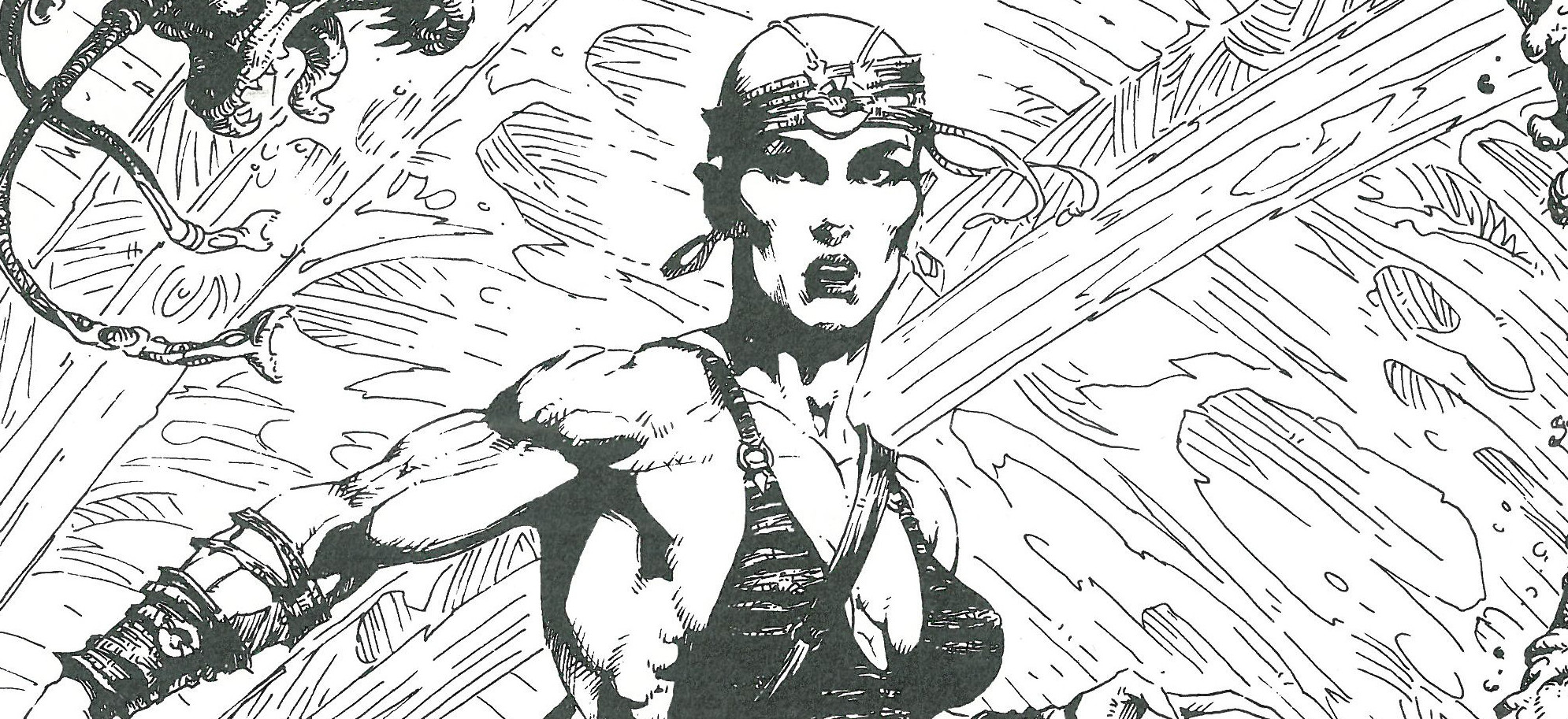This is no place for social commentary, but a Brom image started me looking for what seems like a mysterious and elusive being in Dark Sun: the Mul woman.
From the beginning, the mul has been a staple of Dark Sun art stemming from Brom’s iconic work “The Ravengers” (the cover of the “The Crimson Legion” novel) which has the definitive depiction of Rikus. Muls appeared in many illustations and paintings throughout 2e and 3e. This trend continued into 4e, even giving rise to especially dramatic (and notably non-Athasian) pieces. With so many mul illustrations and paintings, it was surprising that an image of a mul woman seemed so elusive. So I went looking for them and found only 5 instances in than span of 22 years of the setting.
2e
Brom comes through for us in his depiction of one of two the mul woman in 2e. Dragon Magazine 197’s short story Ashes to Ashes features a mul woman character named Indigo, and the illustration of her gives us a look at this rarely illustrated person.

The other illustration comes from the Complete Gladiator’s Handbook, where the unfortunate subject is being stabbed in the back.
3e
When Dark Sun found it’s way back to D&D through Dragon and Dungeon Magazines, Eric Polak gave us this image of a (more than likely) mul wizard – who is a woman.

4e
In 4e there are only two definitive images of a mul woman: that being from William O’Connor in the campaign guide describing the mul race (on page 20) and that of Sarah Stone’s Mul Battle Slave (on page 32). There are two other images that I had almost included but discounted. The first was from Dragon Magazine 390’s “Slaves of Athas”, but I couldn’t be sure about the subject in the middle (DDI here too) since the ears were not clear. The second image from Scott Murphy in Dragon Magazine 202’s “The True”, but then I noticed the subject’s ears (another image from DDI) lacked a point. Both woman are bald, so it could certainly have been the intent of the artists for them to be mul omitting the ear detail.
Conclusion
Whatever the reason, mul women are hard to find in illustrated form. Looking throughout the art of the setting, woman of all the races are depicted in great numbers, so it does seem odd that the mul woman is not a subject oft shown. However, given what the mul stands for, it can be easily understood how difficult the mul female is to illustrate, with the artist having to capture both the human and dwarvish aspects as well as brute strength and femininity.


I suspect this has to do with the imagery of the mul as being a really macho creature. We tend to ascribe (perhaps unwittingly) male character to the race, because it is so much about physical strength and violence. Not that women aren’t capable of either (especially in fantasy), but I suspect it is where our brains go. At times when we create we go with an iconic feeling… and those can often typecast.
Regarding “The True” (an article I was really glad to write!), I wrote up the art order suggestion for that one (authors are usually asked to do so). My writeup doesn’t mention a race, though I admit I was thinking human and communicated the Phoenecian/Tyre, Lebanon angle for inspiration (which are of course human inspirations). The artist used a lot of my suggestions (setting, bone rod, clothing, etc.), though when it comes to the head I had suggested a fez was possible (reflecting some AD&D artwork). The artist didn’t go for that, which is fine. I don’t believe it is intended as a mul, however.
LikeLike
Well said!
I had no idea that authors did an art order suggestion so it must certainly be interesting for authors to see what the artist comes up with.
LikeLike
Appreciate you bloogging this
LikeLike